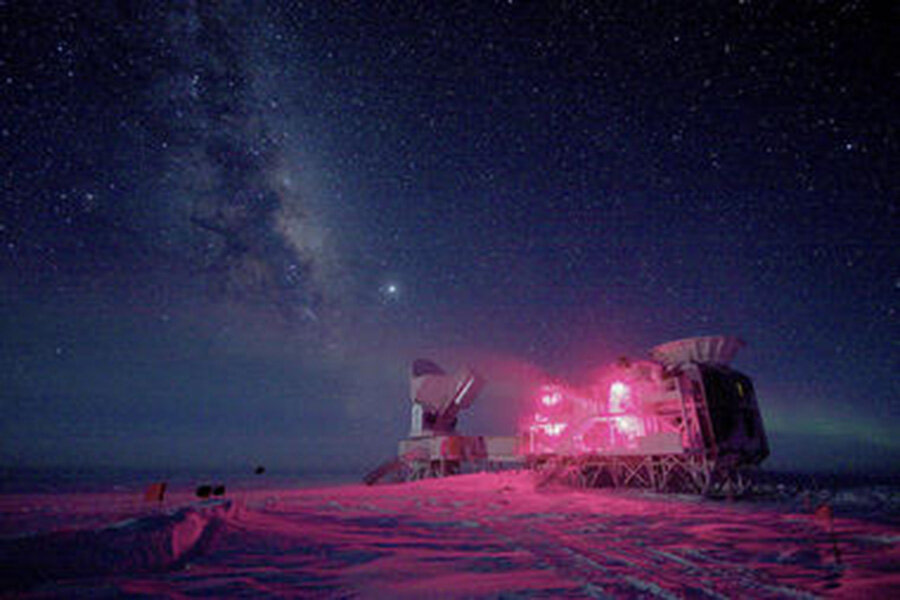Did scientists really have to go to the South Pole to spot those Big Bang waves?
Antarctica may not be very conducive for living, but it is probably the best spot on Earth for stargazing.
It was using the BICEP2 telescope in Antarctica that scientists detected the gravitational waves that were imprinted on the thermal radiation left over from the Big Bang some 14 billion years ago. The observations were made possible because of the cold, dry atmospheric conditions typical for the region
"The South Pole is the closest you can get to space and still be on the ground," said John Kovac, a radio astronomer at the Harvard-Smithsonian Center for Astrophysics and the lead discoverer. "It's one of the driest and clearest locations on Earth, perfect for observing the faint microwaves from the Big Bang."
Vladimir Papitashvili, the US Antarctic Program's astrophysics and geospace sciences program director agrees. "The South Pole is an excellent place for Cosmic Microwave Background observations during the long, dark, and very cold winter," Dr. Papitashvili said in a press release.
Dry conditions (precipitation is roughly 2 inches every year) prevent growth of trees. Vegetation in the region consists mainly of algae, mosses, and lichens.
Last year, temperature on the East Antarctic Plateau plummeted to as low as 133.6 degrees Fahrenheit (minus 92 degrees Celsius), according to NASA.
With an average elevation of more than 2,000 m (6,500 ft.), the high altitude is a huge advantage for the astronomers. It means, "there’s less atmosphere to look through," according to Ice Stories: Dispatches from Polar Scientists. "The cold, dry air makes for minimal water vapor and less atmospheric emission of infrared light, both of which interfere with observations. Best of all, 24-hour darkness in winter means no daily temperature oscillations, reducing air currents."
In addition to the weather conditions, a large number of meteorites are found in this region – more than any other place on Earth. The white ice not only makes it easy for astronomers to spot the meteorites, it also protects them for a very long time.
"There's a whole range of things you can do in astronomy at Antarctica that you can't do anywhere else on Earth," says Michael Burton from the University of New South Wales in Sydney told space.com. "To beat Antarctica, you'd have to go to space. The good thing about Antarctica compared to space is that once you get something in space, you can't expect to change it, while in Antarctica, you can always build it bigger."






